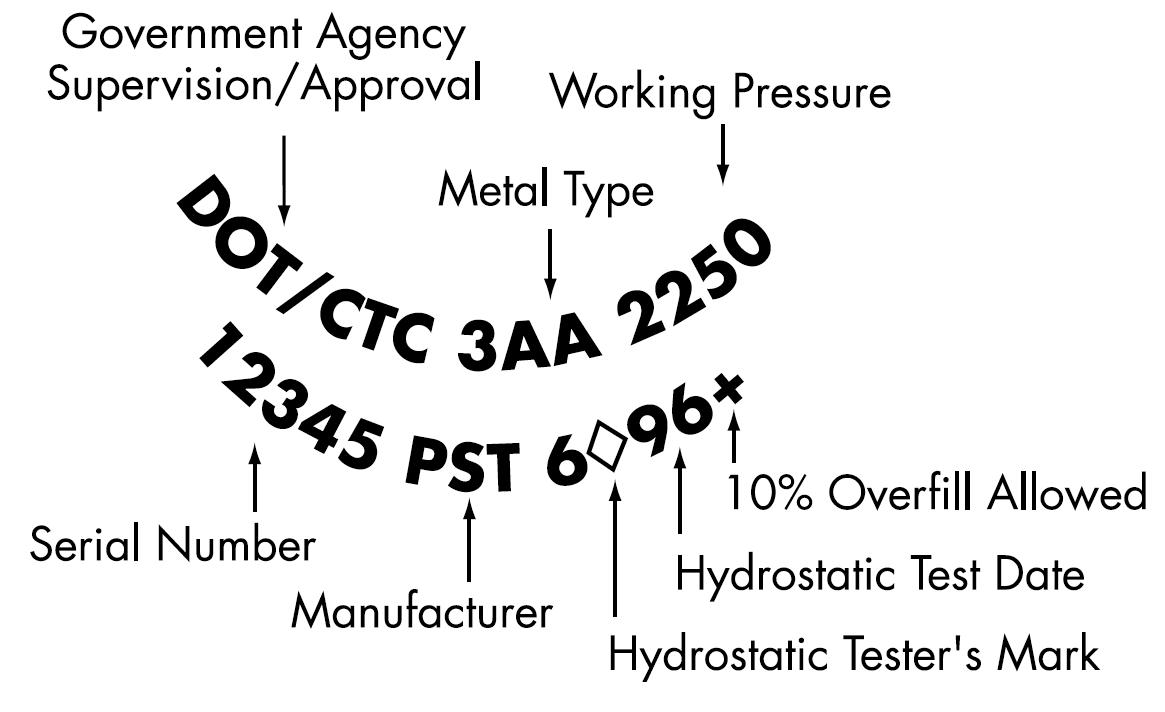Hydrostatic Testing
The Compressed Gas Association (CGA) and the Department of Transportation (DOT) provide guidance on the safe transportation, storage, and use of high pressure oxygen cylinders. This includes the hydrostatic test requirements on all cylinders.
All cylinders are marked on the shoulder of the tank, to designate the type of cylinder, maximum fill pressure, hydrostatic test date, inspector, manufacturer, and serial number. The markings are normally stamped into the shoulder of the cylinder. The hydrostatic test date and inspector mark indicate when the cylinder was last tested and who tested the cylinder. Most cylinders are required to be tested every 5 years. This test ensures the cylinder can safety hold the maximum fill pressure. There are two other markings which are sometimes found on these cylinders. The plus (+) sign located after the test date designates that the cylinder can be filled to 10% above the pressure stamped on the cylinder. The five-pointed star in the same location designates that the hydrostatic test date has been extended an additional 5 years. A cylinder with a five-pointed star would need to be tested every 10 years.
Hydrotesting is done to ensure the cylinder can handle typical ascending pressures of the fill procedure. Once a cylinder is in use and the pressure is descending, there is little concern that it will face ascending pressures until being returned for refill. As such, if a cylinder is in use (filled or partially filled with oxygen) and it reaches its retest date, there is no requirement to pull the cylinder from use or empty the cylinder to facilitate retesting. The cylinder can stay in use until it is emptied. There is no time limit for keeping the cylinder in use. After the cylinder is emptied, it will be returned to our facility where it will be sent out for hydrotesting before it can be refilled.

